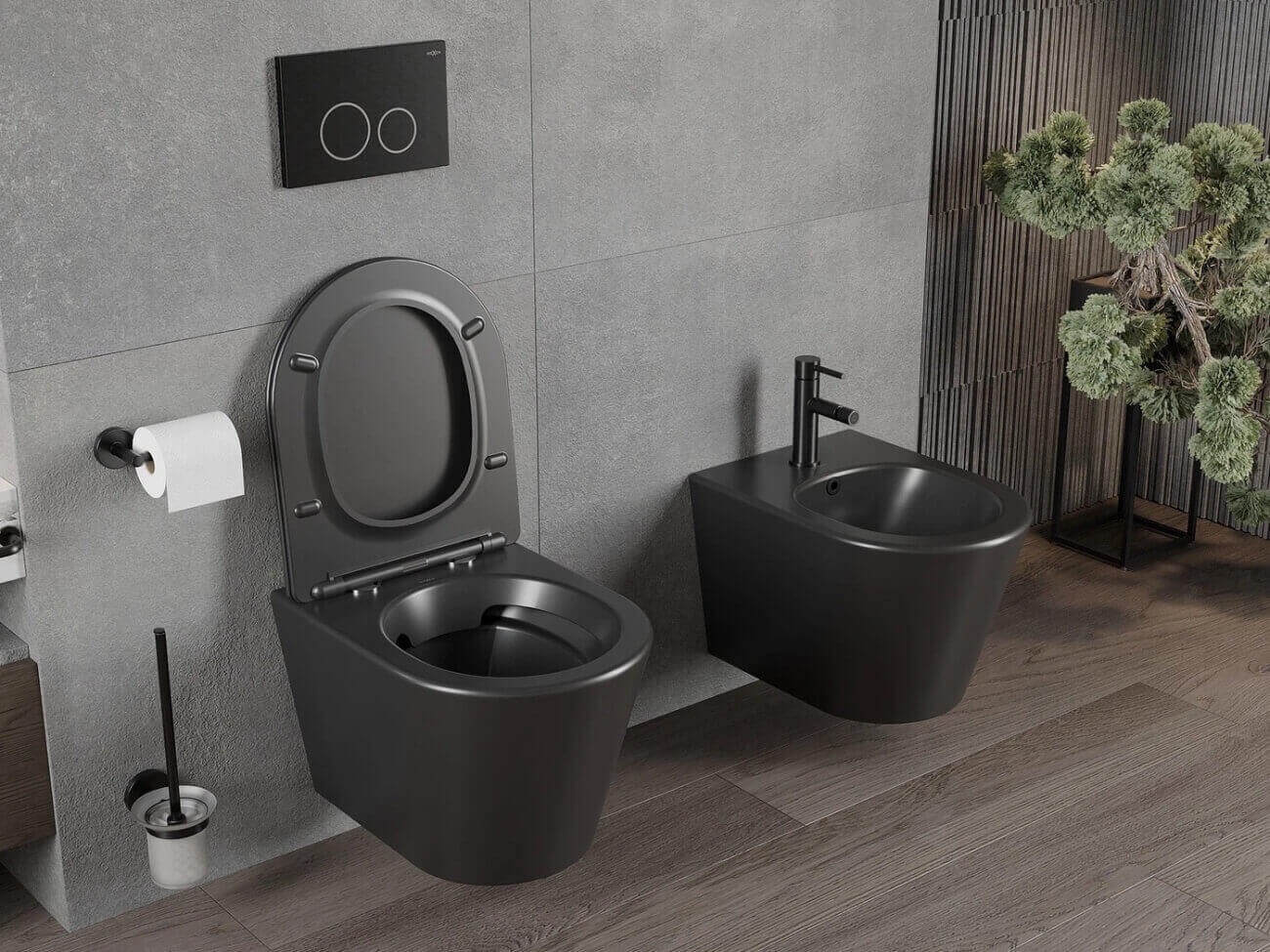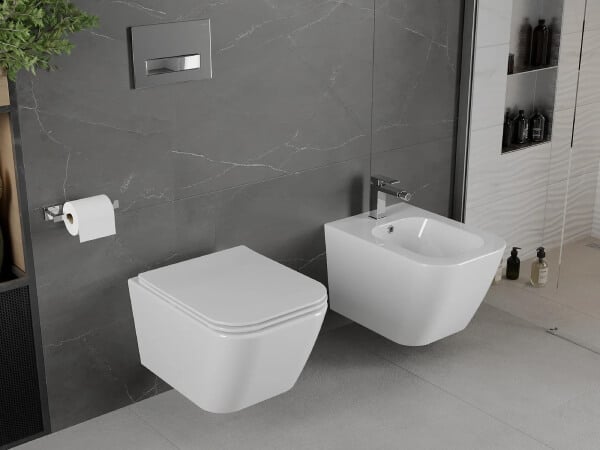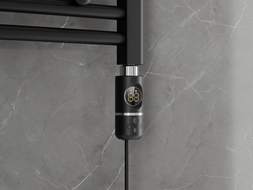
A bidet faucet in the bathroom is a very popular solution that significantly influences the comfort of daily hygiene. Properly selected dimensions of the bidet are crucial for its correct functioning and the aesthetics of the room. Therefore, today you will learn what dimensions are considered standard, what to pay attention to when choosing a bidet, and how to ensure its proper installation so that using it is maximally comfortable.
What will you learn from this article?
Besides discussing the installation dimensions of bidets, we will also talk about:
- how to install a bidet in your bathroom
- what else matters besides its dimensions
- which equipment is worth equipping yourself with before starting the installation.
Contrary to appearances, installing a bidet does not always have to be done by a professional. Sometimes it is enough to prepare properly to go through this process alone.
How to prepare for the installation of a bidet?
When choosing a bidet for your bathroom, one of the first aspects to consider is its dimensions. In standard conditions, a bidet takes up less space than a toilet, but it is worth remembering that both its width and depth should be adapted to the available space. Typical dimensions of a bidet range from:
- width: from 36 to 40 cm
- depth: from 53 to 60 cm
- height: from 40 to 43 cm.
The width of the bidet depends on the model, but it is generally assumed that the distance between the bidet and the wall should be about 20 cm. The appropriate height of the bidet’s sewage approach should meet the user’s needs, but most often it is about 40 cm above the floor, which guarantees seating comfort.
When planning how to install the bidet, one must take into account the space separating the toilet from the sink. Under ideal conditions, this distance should be at least 30 cm to ensure ease of movement and comfort when using sanitary appliances. In some bathrooms, especially in smaller spaces, it may be necessary to find a compromise between aesthetics and functionality, which is why it is always worth planning how to connect the bidet already at the bathroom design stage.
What should be the diameter of the sewer outlet?
When installing a bidet, not only its size is crucial, but also the way it is connected to the water and sewage installation. Bidets come in different configurations, which may require different technical solutions. There are two basic types of bidets:
- wall-mounted bidet
- standing bidet.
Wall-mounted bidets, like wall-hung toilets, require installation on a frame that hides water and sewage installations in the wall. Standing bidets, on the other hand, are installed directly on the floor, which makes them easier to install, but requires more aesthetic space management around them.
One of the most important aspects when installing a bidet faucet is the correct positioning of water connections and drainage. Usually, bidets require two connections – cold and hot water, as well as a waste drain – similar to the installation of a sink. Standard connection distances are typically 10-15 cm from the edge of the device, and their height should be adjusted to the type of bidet. For wall-mounted bidets, the water connections and drain are usually located at a height of about 30-35 cm from the floor. As for the diameter, the appropriate size is 40-50 mm.
When proceeding with the installation of a bidet faucet, one should remember that besides the dimensions, the way of connecting the fixtures is also of great importance. It should be ensured that the faucets and spouts are properly matched to the dimensions of the faucet, which will ensure comfortable water use. It is also good to pay attention to the material from which the water installation is made to ensure it is durable and resistant to damage.

Installing a bidet – how to choose a device for a small bathroom?
Installing a bidet in a small toilet can be a challenge, but proper planning and model selection will allow for comfortable use of the device even in limited spaces. First of all, it is worth considering purchasing compact bidet models, which are characterized by smaller dimensions. Wall-mounted bidets are an ideal solution for small bathrooms, as they take up less space than standing models and additionally allow for hidden water and sewage installations, which visually enlarges the space.
When choosing a bidet for a small bathroom, the next step is to look at the layout of the room and the possibilities of arranging other pieces of equipment, such as the toilet, sink, or shower cabin. In some cases, one might strive for a toilet with a bidet function, which saves space and reduces the number of sanitary devices in the room. Such toilets have a built-in spout, which allows the use of the bidet function without the need to install an additional device.
It is also advisable to remember that there are corner solutions that may be the perfect choice for people with bathrooms of unusual shapes. Connecting a bidet in a corner allows for better space utilization and helps maintain the ergonomics of the room. In such cases, consulting an interior designer is recommended to ensure maximum use of the available space while maintaining aesthetics and functionality.
Installing a bidet – step-by-step instructions
Installing a bidet in the bathroom does not have to be a difficult task if you have previously equipped yourself with the necessary tools. And once you have done that, act according to the tips below.
- Preparing tools and materials:
- adjustable wrench
- angle valves
- screwdriver
- water supply hose (if not included in the set)
- seals
- sanitary silicone (optional).
- Shutting off the water supply
Before starting work, make sure you have closed the main water valve. Check if water is no longer flowing by turning on the tap.
- Preparing the water installation
Place the angle valves or elbows on the water supply points to ensure that it will be available in the bidet after finishing the installation work.
- Mounting the bidet
Set the bidet in the appropriate place. There should be enough space for comfortable use of both the bidet and the toilet. The bidet is usually fixed to the floor or the installation frame.
- Connecting the water
Connect the hose to the valve and the bidet, tightening it with a wrench. Make sure to use seals to prevent leaks.
If the bidet has a built-in faucet, connect it according to the instructions. Bidet faucet is installed similarly to a sink faucet, by tightening it to the bidet body and connecting the hoses to the water installation.
- Checking for leaks
After connecting all elements, open the water valve and check for leaks. If you notice any, use sanitary silicone to seal the structure.



















